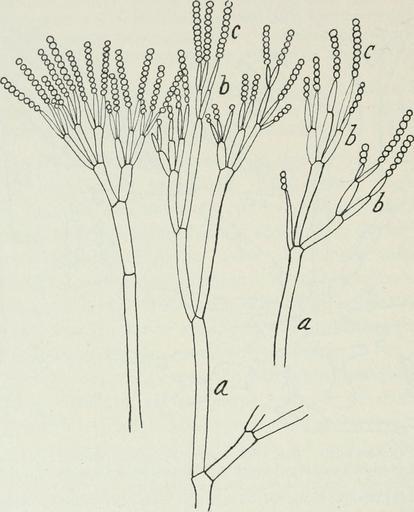MAKE A MEME
View Large Image

| View Original: | Image_from_page_167_of_"Bacteriological_methods_in_food_and_drug_laboratories,_with_an_introduction_to_micro-analytical_methods"_(1915).jpg (1556x1924) | |||
| Download: | Original | Medium | Small | Thumb |
| Courtesy of: | www.flickr.com | More Like This | ||
| Keywords: bookid:bacteriologicalm00schn bookidbacteriologicalm00schn bookyear:1915 bookyear1915 bookdecade:1910 bookdecade1910 bookcentury:1900 bookcentury1900 bookauthor:schneider_albert_1863_1928 bookauthorschneideralbert18631928 booksubject:bacteriology booksubjectbacteriology booksubject:food booksubjectfood booksubject:drug_adulteration booksubjectdrugadulteration bookpublisher:philadelphia_p_blakiston_s_son_co bookpublisherphiladelphiapblakistonssonco bookcontributor:internet_archive bookcontributorinternetarchive booksponsor:internet_archive booksponsorinternetarchive bookleafnumber:168 bookleafnumber168 bookcollection:internetarchivebooks bookcollectioninternetarchivebooks bookcollection:americana bookcollectionamericana bhl collection bhlcollection monochrome drawing sketch outdoor Title: Bacteriological methods in food and drug laboratories, with an introduction to micro-analytical methods Identifier: bacteriologicalm00schn Year: 1915 (1910s) Authors: Schneider, Albert, 1863-1928 Subjects: Bacteriology; Food; Drug adulteration; Bacteriology Publisher: Philadelphia, P. Blakiston's Son &amp; Co Contributing Library: Internet Archive Digitizing Sponsor: Internet Archive View Book Page: Book Viewer About This Book: Catalog Entry View All Images: All Images From Book Click here to view book online to see this illustration in context in a browseable online version of this book. Text Appearing Before Image: 142 BACTERIOLOGICAL METHODS organisms. Cheese poisoning is not uncommon, due to the pres- ence of bacteria which give rise to toxins (tyro-toxicon). In a general way it may be stated that cheese diseases are due to filthy and unsanitary conditions in the dairying establishment re- Text Appearing After Image: Fig. 46.—Penicillium glaucum showing the characteristic spore formation. This fungus is a true saprophyte, the common green mold, occurring on a great variety of organic substances. suiting in infected milk, or to filthy and unsanitary conditions in the cheese factory, or the infection may be traceable to the im- proper and careless storing and handling of the cheese. Ripened cheese being in itself a decomposition product resulting from the invasion of certain desirable micro-organisms usually entering Note About Images Please note that these images are extracted from scanned page images that may have been digitally enhanced for readability - coloration and appearance of these illustrations may not perfectly resemble the original work. Title: Bacteriological methods in food and drug laboratories, with an introduction to micro-analytical methods Identifier: bacteriologicalm00schn Year: 1915 (1910s) Authors: Schneider, Albert, 1863-1928 Subjects: Bacteriology; Food; Drug adulteration; Bacteriology Publisher: Philadelphia, P. Blakiston's Son & Co Contributing Library: Internet Archive Digitizing Sponsor: Internet Archive View Book Page: Book Viewer About This Book: Catalog Entry View All Images: All Images From Book Click here to view book online to see this illustration in context in a browseable online version of this book. Text Appearing Before Image: 142 BACTERIOLOGICAL METHODS organisms. Cheese poisoning is not uncommon, due to the pres- ence of bacteria which give rise to toxins (tyro-toxicon). In a general way it may be stated that cheese diseases are due to filthy and unsanitary conditions in the dairying establishment re- Text Appearing After Image: Fig. 46.—Penicillium glaucum showing the characteristic spore formation. This fungus is a true saprophyte, the common green mold, occurring on a great variety of organic substances. suiting in infected milk, or to filthy and unsanitary conditions in the cheese factory, or the infection may be traceable to the im- proper and careless storing and handling of the cheese. Ripened cheese being in itself a decomposition product resulting from the invasion of certain desirable micro-organisms usually entering Note About Images Please note that these images are extracted from scanned page images that may have been digitally enhanced for readability - coloration and appearance of these illustrations may not perfectly resemble the original work. <strong>Title</strong>: Bacteriological methods in food and drug laboratories, with an introduction to micro-analytical methods <strong>Identifier</strong>: bacteriologicalm00schn <strong>Year</strong>: <a href="https://www.flickr.com/search/?tags=bookyear1915">1915</a> (<a href="https://www.flickr.com/search/?tags=bookdecade1910">1910s</a>) <strong>Authors</strong>: <a href="https://www.flickr.com/search/?tags=bookauthorSchneider_Albert_1863_1928">Schneider, Albert, 1863-1928</a> <strong>Subjects</strong>: <a href="https://www.flickr.com/search/?tags=booksubjectBacteriology">Bacteriology</a>; <a href="https://www.flickr.com/search/?tags=booksubjectFood">Food</a>; <a href="https://www.flickr.com/search/?tags=booksubjectDrug_adulteration">Drug adulteration</a>; <a href="https://www.flickr.com/search/?tags=booksubjectBacteriology">Bacteriology</a> <strong>Publisher</strong>: <a href="https://www.flickr.com/search/?tags=bookpublisherPhiladelphia_P_Blakiston_s_Son_Co">Philadelphia, P. Blakiston's Son & Co</a> <strong>Contributing Library</strong>: <a href="https://www.flickr.com/search/?tags=bookcontributorInternet_Archive">Internet Archive</a> <strong>Digitizing Sponsor</strong>: <a href="https://www.flickr.com/search/?tags=booksponsorInternet_Archive">Internet Archive</a> <strong>View Book Page</strong>: <a href="https://archive.org/stream/bacteriologicalm00schn/#page/n167/mode/1up" rel="nofollow">Book Viewer</a> <strong>About This Book</strong>: <a href="https://archive.org/details/bacteriologicalm00schn" rel="nofollow">Catalog Entry</a> <strong>View All Images</strong>: <a href="https://www.flickr.com/search/?tags=bookidbacteriologicalm00schn">All Images From Book</a> Click here to <a href="https://archive.org/stream/bacteriologicalm00schn/#page/n167/mode/1up" rel="nofollow"><strong>view book online</strong></a> to see this illustration in context in a browseable online version of this book. <strong>Text Appearing Before Image: </strong> <em>142 BACTERIOLOGICAL METHODS organisms. Cheese poisoning is not uncommon, due to the pres- ence of bacteria which give rise to toxins (tyro-toxicon). In a general way it may be stated that cheese diseases are due to filthy and unsanitary conditions in the dairying establishment re-</em> <strong>Text Appearing After Image: </strong> <em>Fig. 46.—Penicillium glaucum showing the characteristic spore formation. This fungus is a true saprophyte, the common green mold, occurring on a great variety of organic substances. suiting in infected milk, or to filthy and unsanitary conditions in the cheese factory, or the infection may be traceable to the im- proper and careless storing and handling of the cheese. Ripened cheese being in itself a decomposition product resulting from the invasion of certain desirable micro-organisms usually entering</em> <strong>Note About Images</strong> <em>Please note that these images are extracted from scanned page images that may have been digitally enhanced for readability - coloration and appearance of these illustrations may not perfectly resemble the original work.</em> bookcentury1900 bookdecade1910 booksubjectfood bookyear1915 bookauthorschneideralbert18631928 booksubjectdrugadulteration booksubjectbacteriology bookpublisherphiladelphiapblakistonssonco bookcollectionamericana bookleafnumber168 bookcontributorinternetarchive bookcollectioninternetarchivebooks booksponsorinternetarchive bhlcollection bookidbacteriologicalm00schn Penicillium glaucum conidiophores (1).jpg Fig 46 ”Penicillium glaucum showing the characteristic spore formation This fungus is a true saprophyte the common green mold occurring on a great variety of organic substances suiting in infected milk or to filthy and unsanitary conditions in the cheese factory or the infection may be traceable to the im- proper and careless storing and handling of the cheese Ripened cheese being in itself a decomposition product resulting from the invasion of certain desirable micro-organisms usually entering https //www flickr com/photos/internetarchivebookimages/20352763065/in/photolist-x1veo2-wSB1Hh-xrWogY-y1Yp1w-oew1h9-xSLc6X-x3Xm1N-ouEKA9-xmH5u4-xzBfk8-ovNqLo-otSBxb-xzY6Go-w4FWJB-wCh2DX-oeL3yz-xhoaGL-xyaF5s-wHT7uA-sMF8CJ-oenQRP-tNaGMQ-wZHBpW-tAErxZ-ovUDeB-ou9SGs-xHJ9os-tsePpa-wWSqwp-xhuA5H-oewmh7-xBf6uF-wHRyfA-xcVz9A-xzAmSi-xSdz1y-xAn5ts-xRERA1-xotvCb-xKW8Lt-xBbXXZ-ts5ho1-xBVRVL-xGcHqg-x4CWyU-wCgR9Z-xjm1m5-xwFHFq-xwEcUJ-tAEqU4 1915 Schneider Albert Penicillium glaucum PD-old | ||||